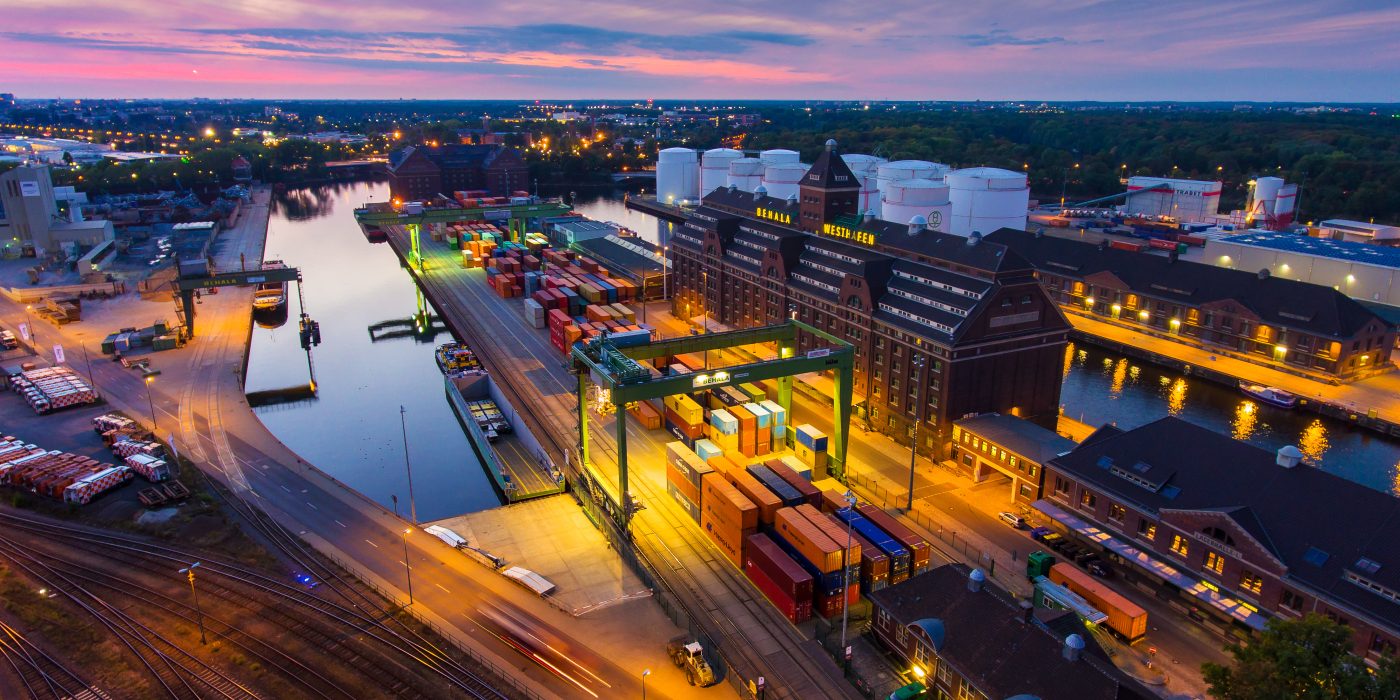In comparison to traditional lighting systems, LED lighting reduces energy consumption, decreases maintenance costs, and lasts longer. Smart lighting systems can also be used to prevent light emissions with the goal of limiting light to occasions when it is needed.
Aim of the measure
The aim of incorporating LED lighting in port operations is to limit greenhouse gas (GHG) emissions and light pollution in surrounding areas, which often include relatively fragile ecosystems. According to Niedersachsen Ports in Germany (one of the port authorities that implemented this measure) light energy consumes around 20% of the energy within the port area; around 70-80% of energy could be saved by regulating lighting within the port, controlling it and converting it to LED.
Ports that have implemented this good practice include:
- Ports of Lille
- Port of Den Helder
- Bremerhaven
- Niedersachsen Ports
Potential impacts
According to Niedersachsen Ports, light energy equates to approximately 20% of total energy consumption within the port area. According to Sifakis, N. et al., (2021), lighting exceeds 70% of a port’s energy demand in most cases. The article also suggests that by using smart lighting, energy reduction can reach up to 70% and, in some scenarios, even 90%. By changing all conventional lights to smart LED lights, Niedersachsen Ports recently saved more than 40% in energy.
Possible obstacles when implementing this measure include:
- Changing conventional lights to LED is relatively expensive, especially when the port covers an extensive area. The port’s infrastructure might need to be changed, costing time, human resources and money.
- Public port authorities that outsource the change to LED and/or smart lighting often need to tender the work due to the high costs.
- The brightness of LED lights in combination with insufficient shielding can lead to light pollution.
- LED lights in general have a longer lifespan. However, fixing or replacing them can be more complex than changing a conventional light bulb.
- For smart lighting, the limitations and possibilities for errors is largely dependent on how smart the lighting will be. It is possible to use historical data to greatly reduce energy consumption, however this increases the chance of forecast errors.
Key learnings from practice
- LED and smart lighting is an effective measure, as a large part of light emissions can be reduced, and light consumption is a significant part of a port’s entire energy consumption.
- Light pollution is a severe problem in fragile ecosystems, and smart lighting can ensure that light is only used when necessary.
- LED lighting is an expensive and time-consuming measure to implement, as in many cases, it is not only the light bulbs that need to be replaced.
- Implementing LED lighting is relatively straightforward. However, for smart lighting the decrease in energy consumption and errors that might occur due to forecasting depends on how smart the lighting system is.
Sources
Sifakis, N., Kalaitzakis, K. & Tsoutsos, T., 2021. Integrating a novel smart control system for outdoor lighting infrastructures in ports Energy Conversion and Management.
